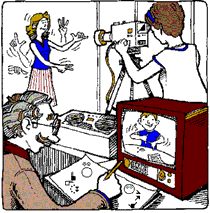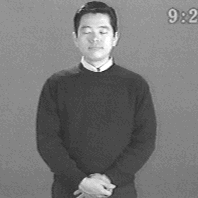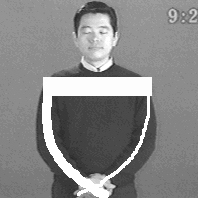Lesson 1 continued...
Think Like A Scribe:
Writing Movement, Not Meaning
If you are a signer, and you want to transcribe Sign Language
videos, then it helps to think like a movement notator, or a
scribe, rather than a signer.
I know this is hard. You cannot divorce yourself from what
you already know. But there are some techniques you can learn,
and that is the purpose of this course.
As you know, Sign Language interpreters are trained to repeat
what was said in Sign Language, without imposing their opinions
on what is being said. They are supposed to remain neutral, almost
like a machine that simply gives back what it received....without
making any judgements.
A movement scribe plays that neutral role too. The scribe views the movments on the video, without making linguistic judgements. What is wrong or right is not the issue. The goal is to write what you see, without imposing your opinion.
So to think like a movement scribe, use your eyes and brain like a camera...Look at what you see, and record the movement position by position, almost as an animator would capture movement frame by frame.
To adjust to this new idea, try writing stick figures as an exercise to train your eye. Later you can drop the stick figures, when you become skilled. See Figure 5 & 6.
Figure 5.
Imagine sitting in front of a video screen:

When watching a video, the signer faces you. That is called the
Receptive View.
Because SignWriting was first developed from video transcription, the writing system started in the Receptive View.
So starting with this position...

A thick line is used for the shoulders.

You are the reader. When one arm is in front of the other, the arm that is closest to you, is thicker.
That is why one arm line is thicker in the above diagram.
It is closer to the reader.
It also shows that one arm is in front of the other arm. So far,
your writing looks like this:
